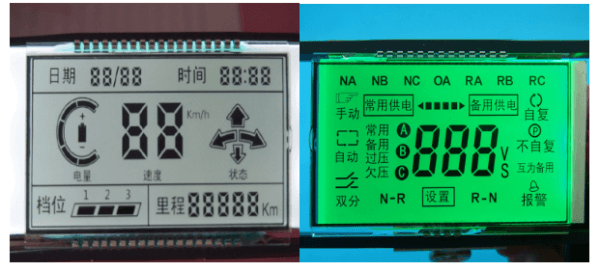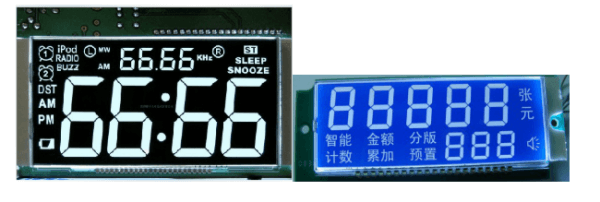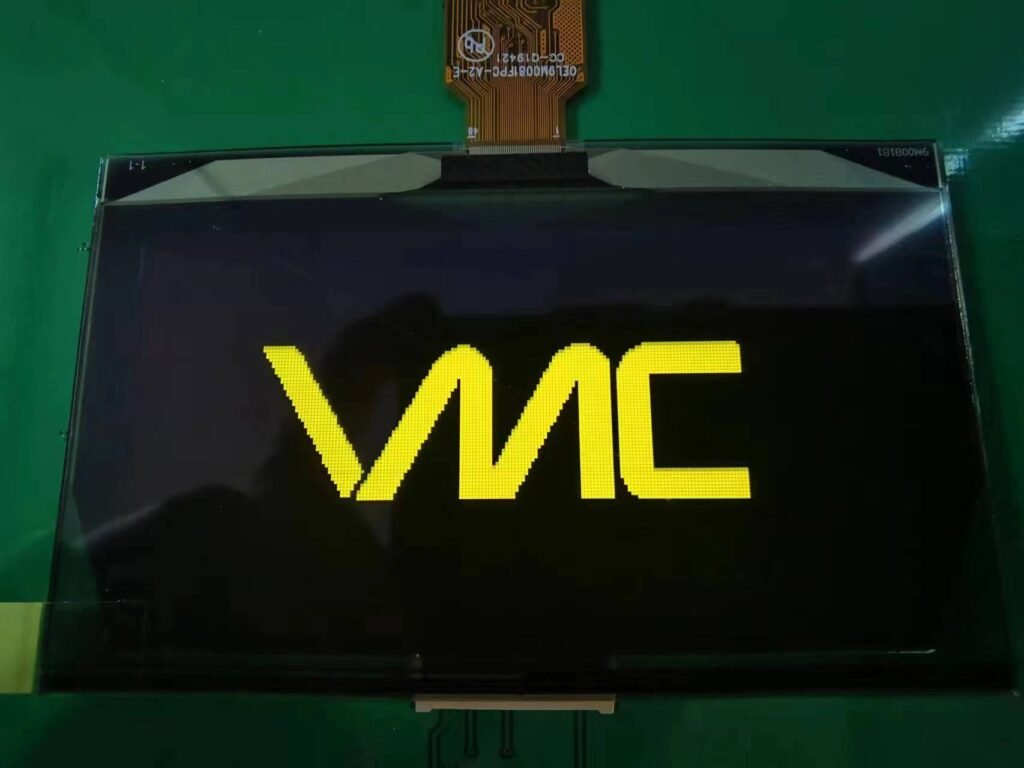As we all know, A liquid crystal display is a passive display, it cannot emit light and can only use ambient light. It requires very little energy to display patterns or characters. It is precise because of low power consumption and miniaturization that LCD has become a better display method.
The liquid crystal material used in liquid crystal display is an organic substance with both liquid and solid properties. Its rod-like structure is generally arranged in parallel in the liquid crystal cell, but its arrangement direction can be changed under the action of an electric field.
For positive TN-LCD, when no voltage is applied to the electrodes, the LCD is in the “OFF” state, and light can pass through the LCD to be in a white state; when a voltage is applied to the electrodes, the LCD is in the “ON” state, and the long axis direction of the liquid crystal molecules is in the “OFF” state. Aligned along the direction of the electric field, light cannot pass through the LCD and is in a black state. By selectively applying a voltage to the electrodes, different patterns can be displayed.
For negative STN-LCD, the twist angle of the liquid crystal is larger, so the contrast ratio is better and the viewing angle is wider. STN-LCD is displayed based on the principle of birefringence. Its primary color is generally yellow-green, and the font is blue, which becomes a yellow-green mode. When using a violet polarizer, the base color will turn gray into a gray mold. When using a polarizer with a compensation film, the base color will become close to white. At this time, STN becomes a black and white mode, which is FSTN. The polarizer of the above three modes is turned 90°, which becomes a blue mode, and the effect will be better.
Whatever TN LCD/STN screen, they usually have two display types: positive display type and negative display type. Today, I am going to use segment display and PMOLED display as examples to show you the differences between positive and negative liquid crystal displays.
Positive Type Display
Positive display means that the color of the content displayed on the LCD screen is darker than the color of the background, such as black characters on a yellow-green background (yellow-green screen), and black characters on a gray-white background (FSTN), such screens generally display better in sunlight.

As shown above, the bottom is gray and white/green, the characters are black, and the color of the characters should be darker than the background color, that is, a positive display;
There is also a relatively simple way of distinguishing, that is, the color of most of the positive display characters is black. I just mentioned that this type of screen has a good display effect in the sun. It is precisely because the characters are black, so the direct sunlight is not easily affected under the conditions.
Negative Type Display
A negative display means that the color of the displayed content should be lighter than the background color, such as white text on a blue background (blue screen), and white text on a black background (VA segment code screen). Such screens have relatively high contrast, and the indoor display effect is required. better than positive.


As shown in Figure 2 above, the bottom is black/blue, the words are white, and the color of the words is lighter than the background, which is a negative display;
There is also a relatively simple way to distinguish, that is, the color of most of the negative display characters is white, because the LCD screen itself does not emit light, the color of the negative display characters is actually the color printed by the backlight through the glass, and the backlight is white. The typed word is also white, in other words, the negative display must have a backlight to display the content.
OLED also has two display methods: Positive display and Negative display:
1. Positive display: It is white (the natural color of the LCD screen) with black numbers and letters on the bottom, that is, dark characters on a light-colored background. Such as black characters on a yellow/green background (yellow/green screen), and black characters on a gray-white background.
2. Negative display: It is a black background, and the numbers and letters are displayed in white (the natural color of the LCD screen), that is, light-colored characters on a dark background. Such as white text on a blue background, and white text on a black background.
AMOLED is a full-color display, it can support both positive and negative displays. PMOLED display can only support Negative display because of the characteristics of the Passive OLED.


5 Responses
I am in fact thankful to the holder of this site who has shared this wonderful post at
here.
Thanks for your comments Jenifer. I am very happy that this article is works for you.
Informative article, exactly what I needed.
Thanks for your comments:)
If there is any inquiries, welcome to contact me at nora@lcdscreenmfg.com for more details.